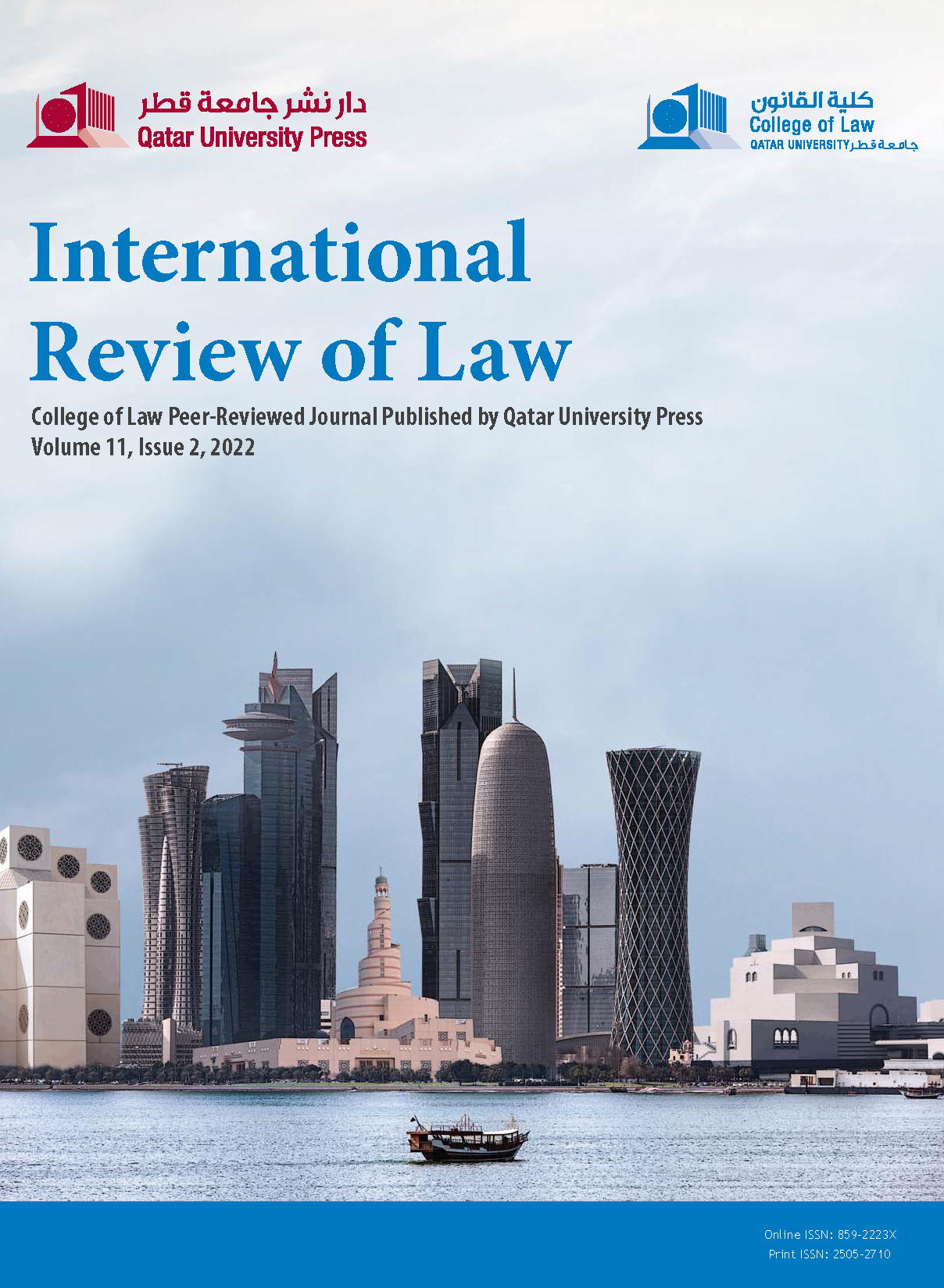Human Rights of Women: Intersectionality and the CEDAW
Abstract
This research aims to track the record of the “Convention on the Elimination of All Forms of Discrimination against Women (CEDAW)” since its entry into force in 1981, to review its texts and the cases brought to it, to know how it considered and dealt with intersectional discrimination against women. This paper evaluates if CEDAW has succeeded or failed to protect women from ‘intersectionality’. However, this discrimination describes compound discrimination against women based on sex, gender, identity, religion, belief, race, ethnicity, color, culture, socioeconomic status, age, class, and/ or origin... etc. The importance of this research is since despite a lot of cases of compound discrimination practiced against women around the world, the text of the Convention has not changed, and its committee, which is composed of experts in this field, did not adopt any ideas about the nature of discrimination.
To determine the role of intersectionality, the research first focused on the theory of intersectionality in terms of concept and practice. Secondly, it showed how it affects women’s lives with examples from India, Brazil, Canada, Hungary, and others. Finally, it traced the concept of intersectionality, and how the Convention or its committee dealt with it through its general recommendations. The research found that CEDAW has overlooked the concept of intersectionality in its texts, while its committee addressed it in one of its recommendations in 2010 – noting that such recommendations are limited in scope and efficacy – which adversely impacted women’s rights globally. Therefore, the research recommends that the concept of intersectionality should be fully integrated into the text of the Convention, which will be reflected on the state parties by taking special measures that concretely give advantage to women who have been subjected to a history of discrimination.
Metrics
##plugins.themes.bootstrap3.article.details##
CEDAWThe CommitteeGeneral recommendationIntersectionalityIntersectional discrimination
Atrey, S. ‘Women’s Human Rights: From Progress to Transformation, An Intersectional Response to Martha Nussbaum’ (2018) 40 Human Rights Quarterly.
________. Intersectional Discrimination (Oxford University Press 2019).
Campbell, M. ‘CEDAW and women’s intersecting identities: A pioneering new approach to intersectional discrimination’ (2015) 11 Revista Direito.
CEDAW. ‘Convention on the Elimination of All Forms of Discrimination against Women, 18 December 1979’ [entered into force on 3 September 1981]. 1249 UN Treaty Series
¬¬________. ‘General Recommendation No. 19 on violence against women’ (1992)
________. ‘General recommendation No. 25, on article 4, paragraph 1, of the Convention on the Elimination of All Forms of Discrimination against Women, on temporary special measures’ (2004)
________. ‘General recommendation No. 27 on older women and protection of their human rights’ (2010)
________. ‘General recommendation No. 28 on the core obligations of States Parties under Article 2 of the Convention on the Elimination of All Forms of Discrimination against Women’ (2010)
________. ‘Communication No. 34/2011: Views adopted by the Committee at its fifty-seventh session, 10-28 February 2014’
________. ‘Report of the inquiry concerning Canada of the Committee on the Elimination of Discrimination against Women under Article 8 of the Optional Protocol to the Convention on the Elimination of All Forms of Discrimination against Women’ (2015)
Chow, P. ‘Has intersectionality reached its limits? Intersectionality in the UN human rights treaty body practice and the issue of ambivalence’ (2016) 16 Human Rights Law Review.
Crenshaw, K. ‘Demarginalizing the intersection of race and sex: A Black feminist critique of antidiscrimination doctrine, feminist theory, and antiracist politics’ (1989) 57 Feminist Legal Theory.
Curran, S. ‘Intersectionality and human rights law: An examination of the coercive sterilizations of Romani women’ (2016) 16 Equal Rights Review.
Exner Pirot, H. ‘Friend or faux? Trudeau, Indigenous issues and Canada’s brand’ (2018) 24 Canadian Foreign Policy Journal.
Fernández, A. M. ‘Gender violence: Femicides in Argentina’ (2012) 17 Interdisciplinary Journal of Family Studies.
Manjoo, R. and D. Nadj. ‘Bridging the Divide: An Interview with Professor Rashida Manjoo, UN Special Rapporteur on Violence Against Women’ in E. S Buzawa and C. G. Buzawa (eds.), Global Responses to Domestic Violence (Springer International Publishing 2017).
Matter of Teixiera, CEDAW 17/2008.
Moeckli, D. and S. Farrier. ‘Equality and Non-Discrimination’ in S. Farrior (ed.), Equality and Non-Discrimination under International Law, Vol. II (Routledge 2015).
Mullins, L. ‘CEDAW: The Challenges of Enshrining Women’s Equality in International Law’ (2018) 20 Public Integrity.
Nash, J. ‘Re-thinking intersectionality’ (2008) 89 Feminist Review.
Nussbaum, M. ‘Women's Progress and Women’s Human Rights’ (2016) 38 Human Rights Quarterly.
O’Rourke, C. ‘Bridging the Enforcement Gap-Evaluating the Inquiry Procedure of the CEDAW Optional Protocol’ (2018) 27 American University Journal of Gender, Social Policy and the Law.
Reilly, N. ‘Seeking gender justice in post-conflict transitions: Towards a transformative women’s human rights approach’ (2007) 3 International Journal of Law in Context.
Scheim, A.I. and G.R. Bauer. ‘The Intersectional Discrimination Index: Development and validation of measures of self-reported enacted and anticipated discrimination for intercategorical analysis’ (2019) 226 Social Science & Medicine.
Shin, H. ‘CEDAW and women’s human rights: Achievements and obstacles’ (The Castan Center for Human Rights Law’s Annual Conference on Human rights, Monash University, 2004)
Šimonović, D. ‘Convention on the Elimination of All Forms of Discrimination against Women, New York, 18 December 1979’ Audiovisual Library of International Law
Snyder, E. ‘Indigenous feminist legal theory’ (2014) 26 Canadian Journal of Women and the Law.
Supreme Court of India, ‘Vishaka and others v. State of Rajasthan, (AIR 1997 Supreme Court 3011), by: J.S. Verma C.J.I., Mrs. Sujata V. Manohar and B.N. Kirpal. JJ’ (1997)
Truscan, I. and J. Bourke Martignoni. ‘International Human Rights Law and Intersectional Discrimination’ (2016) 16 Equal Rights Review.


